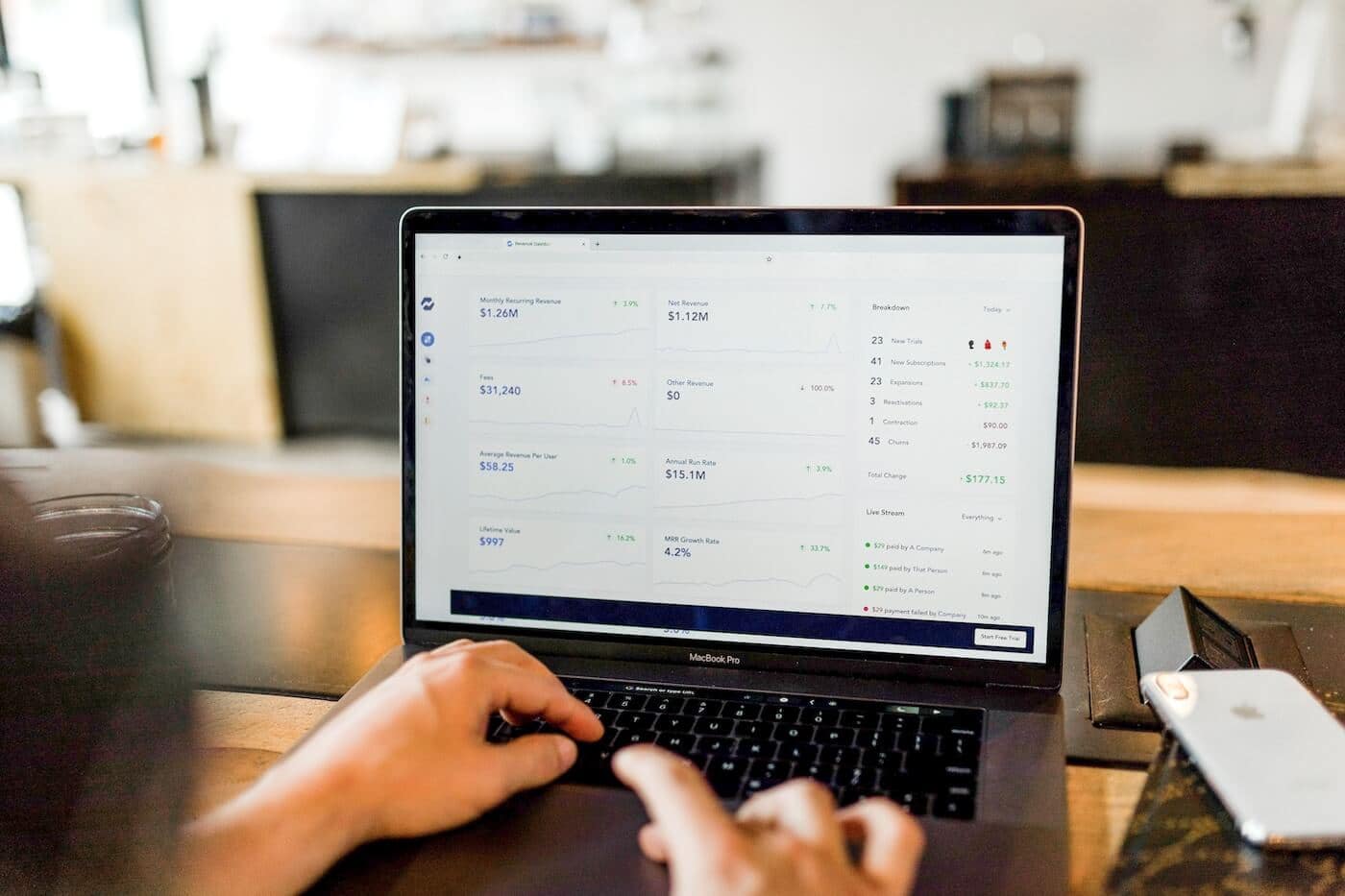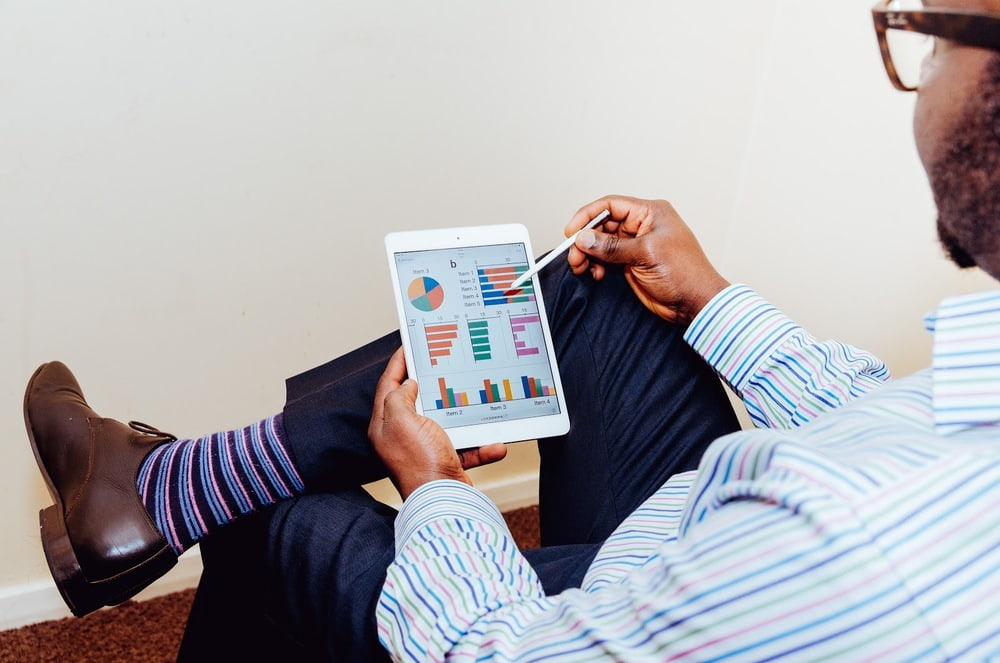Financial Dashboards: 5 Must Know Tips for CFOs

CFOs and business leaders have to rely on numbers to make smart decisions. With financial dashboards, business leaders have access to a live and up-to-date visual representation of their business’ financial standing. As such, financial dashboards are a critical tool for CFOs and management teams to assess the current state of business affairs and make swift and informed choices.
With the rise of technological innovations and big data comes interactive dashboards. Hopefully, maintaining data across spreadsheets is a thing of the past in your organisation, or at least, not your primary tool for analysis. With dashboards, you can drill into data, see everything in real-time and pull reports with the click of a button.
Coming Up
1. What is an Executive Dashboard?
2. Types of Financial Dashboards
What is an Executive Dashboard?
Customisable dashboards can be designed such that the necessary key performance indicators (KPIs) are in clear view. Within an organisation, each department and manager has its own set of goals that precipitate the need for its own set of data.
When it comes to an executive financial dashboard, you can create the perfect mix of financial data and critical metrics to gain insight into your business. As a CFO, some of the essential KPIs to include are:
- Working Capital
- Debt to Equity
- Accounts Receivable Turnover
- Accounts Payable Turnover
- Inventory Turnover
- Operating Cash Flow
- Current Ratio
- Payroll Headcount Ratio

Types of Financial Dashboards
Every financial dashboard serves a different need and a variety of analysis.
Here’s a look at some of the most common types of financial dashboards that exist to serve the needs of CFOs better:
Profit and Loss
This dashboard summarises profits and losses by showcasing revenues, expenses and cost acquired throughout a fiscal year. A Profit & Loss dashboard helps a CFO recognise where costs can be cut so that profits can be maximised. Some of the KPIs tracked are: operating expense ratio, net profit margin and gross profit margin. This type of dashboard is often reviewed on a monthly and quarterly basis.
Cash Management
If you’re looking to know whether or not your business can afford its current short-term liabilities, then a cash management dashboard is the right dashboard for you. It involves the current ratio and quick ratio. A cash management dashboard can be used for analysis to improve your business’ overall financial health. It will also give you a quick review of if your operations are currently fluid enough to survive.
Financial Performance
For a high-level view on where to spend revenue, a financial performance dashboard can assist. This is a visual display of the primary metrics on your balance sheet. Financial performance dashboards can be built to display:
- Returns on Assets
- Return on Equity
- Debt-Equity Ratio
- Working Capital Ratio
With these metrics, you can see how well your assets are being managed. If you leave these critical metrics unchecked for too long, you can risk going bankrupt. With a dashboard in place, you’re able to have a hold on your business’ long-term viability, as well as easily share relevant information with shareholders.
Accounts Receivable and Accounts Payable
AR & AP dashboards show how quickly your business can pay off suppliers and how quickly you can collect payments you are owed. They show this information from a bird’s eye view, but if need be, you can click on the totals to see who owes you what and who you owe, too. Having this information can help you improve vendor relationships and also ensure that invoices are managed on time. Automation solutions like Solvexia can help to automate invoices, as well as provide real-time performance metrics. Many businesses fall behind on payments because of bottlenecks or delayed approval processes, but automation software can prevent such delays.
When it comes to building a financial dashboard, keep in mind these best practices:
- Visualisation tools: Choose your charts and graphs wisely to help display information in the best way possible.
- Negative space: Don’t be afraid of having white space. When a dashboard is too cluttered, it can be overwhelming and counterproductive.
- User Experience: Ensure that the dashboard is easy to read and understand. As a CFO, you have a lot of things on your plate, so you’ll want easily digestible information. With an automation tool like Solvexia, you can create your dashboard with a drag-and-drop interface.
Building a Dashboard
What dashboard is right for you? You are likely going to work with multiple financial dashboards, but you have to start with one! To build your financial dashboard, follow these steps:
1. Choose Metrics: Depending on the business goals you are tracking, you’ll be able to determine the right metrics. One way to narrow the choice of metrics down is to make sure that you’re choosing information that is high-level enough so you can limit the amount of information in the dashboard. A dashboard offers you the ability to drill deeper down if need be, so there’s no reason to have to put everything on the dashboard at once.
2. Track Performance: Based on the metrics you are tracking, you can choose the periods in which you track information. Therefore, you can visualise trends over distinctive periods.
3. Use Graphs: You can choose to chart information with single data points or by mixing multiple metrics.
4. Decide Frequency: For financial leaders, the best rule of thumb is to set up quarterly dashboards for assessment purposes.
Other Dashboards
CFOs and business managers in any department can benefit from various types of dashboards. Dashboards don’t only have to showcase financial information.
Here’s a brief look at some other types of dashboards that can assist your organisation:
1. Marketing Dashboards: Marketing dashboards help to assess goals and leads. This is especially useful if your business works with a set sales funnel so that you can gauge how your marketing efforts are moving customers into different stages of the sales cycle.
2. Operations & Safety Dashboards: These dashboards are designed to measure safety and risk. The dashboard can identify places for improvement for hazard identification and even employee training.
3. HR Dashboards: For HR teams, these dashboards are increasingly important to showcase how satisfied employees are. They can help to prevent employee turnover and thereby reduce costs associated with recruiting and training new employees.
The Bottom Line
From building your own dashboards or using existing solutions provided by software systems like Solvexia, you can better monitor your business in real-time so you can make faster decisions with more accurate and more transparent data.
Software solutions that help you create dashboards can offer you a look at your business’ financial standing in a visual form and can also assist with analysis, forecasting, and reporting. Whether you have tried a dashboard before or are ready to get started, the solutions such as Solvexia are there to help.
FAQ
Intelligent reconciliation solution
Intelligent rebate management solution
Intelligent financial automation solution
Intelligent Financial Automation Solution
Intelligent financial automation solution
Intelligent financial automation solution
Intelligent financial automation solution
Intelligent financial automation solution
Intelligent regulatory reporting solution
Free up time and reduce errors
Recommended for you

Request a Demo
Book a 30-minute call to see how our intelligent software can give you more insights and control over your data and reporting.

Reconciliation Data Sheet
Download our data sheet to learn how to automate your reconciliations for increased accuracy, speed and control.

Regulatory Reporting Data Sheet
Download our data sheet to learn how you can prepare, validate and submit regulatory returns 10x faster with automation.

Financial Automation Data Sheet
Download our data sheet to learn how you can run your processes up to 100x faster and with 98% fewer errors.

Financial Automation Data Sheet
Download our data sheet to learn how you can run your processes up to 100x faster and with 98% fewer errors.

Financial Automation Data Sheet
Download our data sheet to learn how you can run your processes up to 100x faster and with 98% fewer errors.

Financial Automation Data Sheet
Download our data sheet to learn how you can run your processes up to 100x faster and with 98% fewer errors.

Financial Automation Data Sheet
Download our data sheet to learn how you can run your processes up to 100x faster and with 98% fewer errors.

Financial Automation Data Sheet
Download our data sheet to learn how you can run your processes up to 100x faster and with 98% fewer errors.

Rebate Management Data Sheet
Download our data sheet to learn how you can manage complex vendor and customer rebates and commission reporting at scale.

Top 10 Automation Challenges for CFOs
Learn how you can avoid and overcome the biggest challenges facing CFOs who want to automate.
.svg)







